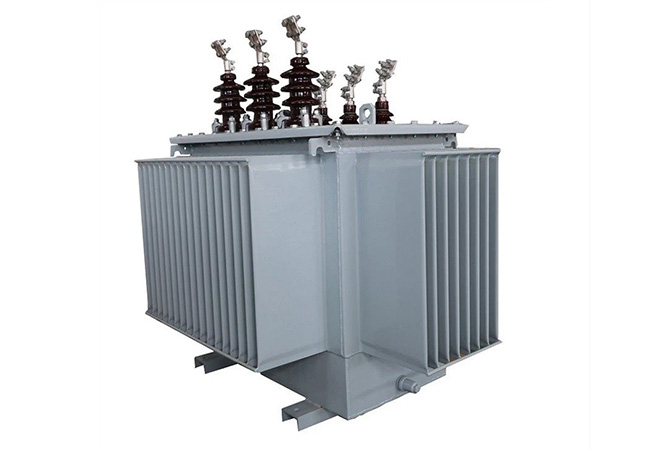What Size Step-Up Transformer Is Suitable For Photovoltaic Power Generation?
10-15 2024 | By:
According to industry experience, the construction of a 1GW photovoltaic power station requires about 100 booster transformers. The specific number depends on the layout of the photovoltaic power station, the transmission distance, topography and other factors. Generally speaking, the capacity of each booster transformer is between 630kVA and 800kVA. Through the function of the booster transformer, the low-voltage power output of the photovoltaic power station is increased to the standard voltage of the high-voltage power grid (usually 10kV or 11kV) to meet the power grid’s requirements for power.

The appropriate size of the step-up transformer for photovoltaic power generation needs to be comprehensively considered based on the scale of the photovoltaic power station, the expected power generation, and the requirements for grid access. Common photovoltaic box-type step-up transformers have capacities of 1600kva, 2000kva, 1250kva, and 2500kva, etc. The specific selection should be based on the design plan and actual needs. It is generally recommended that the capacity be selected to be about 1.2-1.5 times the output power of the photovoltaic panel to ensure system efficiency and safety.

1. Photovoltaic power generation and step-up transformer
As an important part of clean energy, the power generation efficiency of photovoltaic power generation is closely related to the selection of step-up transformers. The main function of the step-up transformer is to stably increase the electric energy generated by the photovoltaic array to the required voltage level to ensure the smooth transmission of electricity. Therefore, choosing the appropriate step-up transformer capacity is crucial for the stable operation of the photovoltaic power generation system.
2. Factors affecting the selection of step-up transformer capacity
1. Scale and expected power generation of photovoltaic power stations: The scale and expected power generation of photovoltaic power stations are the primary considerations for selecting the capacity of step-up transformers. Generally speaking, the larger the scale of the power station, the larger the transformer capacity required.
2. Grid access requirements: Different regions and different grid companies may have different requirements for PV power stations to access the grid. When selecting a step-up transformer, the grid access standards and regulations should be fully considered.
3. Future development plan: The long-term development plan of the PV power station will also affect the selection of the step-up transformer. If the power station is expected to be expanded or upgraded in the future, a certain capacity margin should be reserved when selecting the transformer.
3. Common step-up transformer capacity and applicable scenarios
In the photovoltaic power generation system, the common photovoltaic box-type step-up transformer capacity is 1600kva, 2000kva, 1250kva and 2500kva. These capacity specifications can adapt to photovoltaic projects of different scales and needs. For example, the capacity of 1600kva is suitable for medium-sized photovoltaic power stations; while the large-capacity transformer of 2500kva is more suitable for large photovoltaic power stations or scenarios with high power demand.
4. Practical suggestions for capacity selection
When selecting the capacity of the step-up transformer, in addition to considering the above factors, you should also pay attention to the conversion efficiency, quality, reliability and safety of the product. At the same time, it is recommended to communicate with professional photovoltaic system designers or suppliers to ensure that the selected transformer can meet the actual needs and the requirements of long-term stable operation. In addition, based on industry experience, it is generally recommended that the capacity be selected to be about 1.2-1.5 times the output power of the photovoltaic panel, so that a certain safety margin can be left while ensuring system efficiency.

What Size Step-Up Transformer Is Suitable For Photovoltaic Power Generation?
You may also find these interesting:


